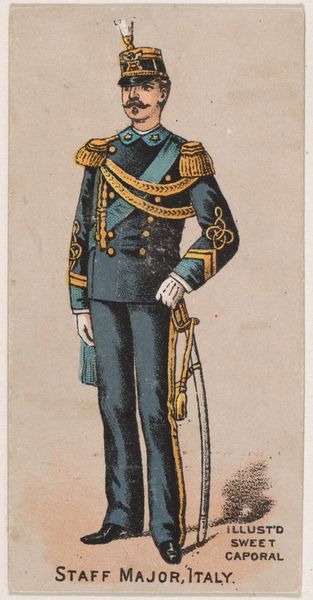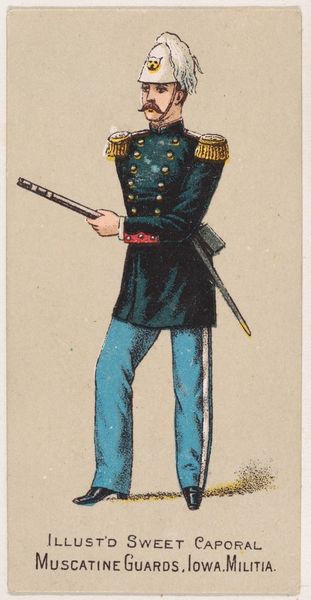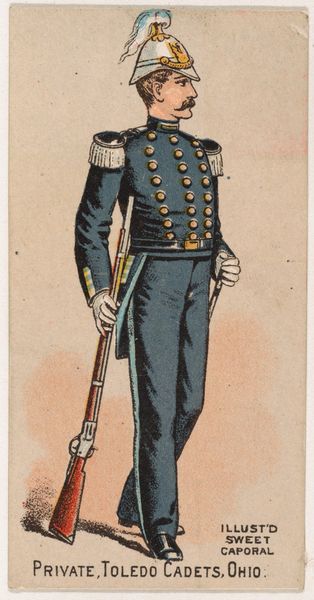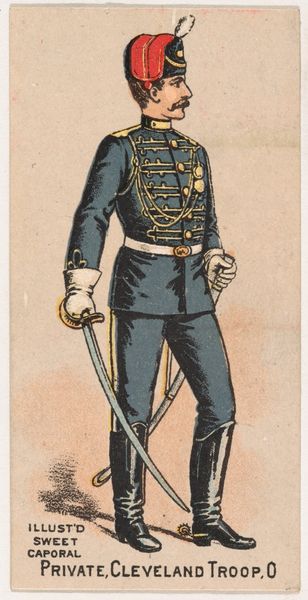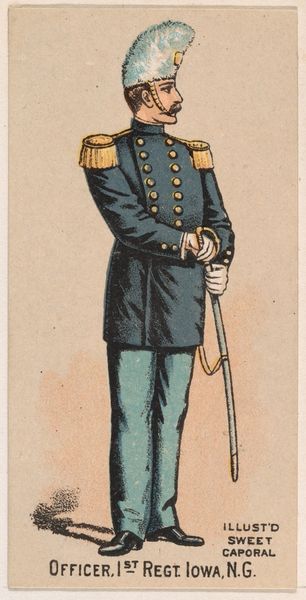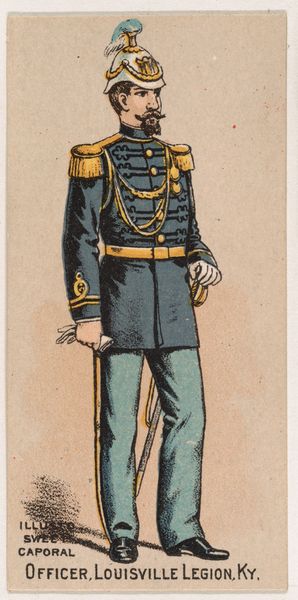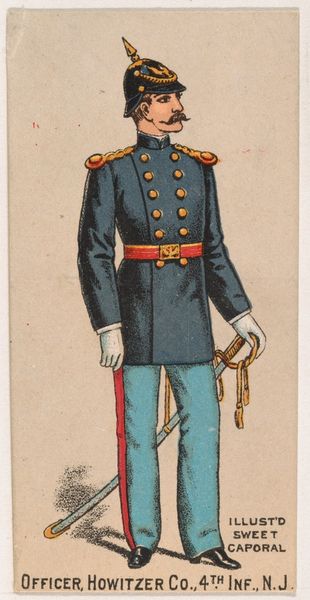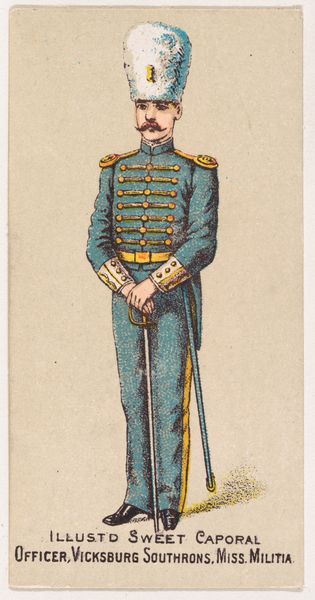
Admiral, Turkish Navy, from the Military Series (N224) issued by Kinney Tobacco Company to promote Sweet Caporal Cigarettes 1888
0:00
0:00
Dimensions: Sheet: 2 3/4 × 1 1/2 in. (7 × 3.8 cm)
Copyright: Public Domain
Curator: Here we have a peculiar little artwork titled "Admiral, Turkish Navy," dating back to 1888. It comes from the Military Series, N224, created by the Kinney Tobacco Company to promote Sweet Caporal Cigarettes. It's a lithograph, so a print, housed now in the Metropolitan Museum of Art. Editor: My first impression? Well, it’s…ostentatious! All that gold braid. It almost feels like a caricature, but there's also a certain formality, even charm. Curator: It *is* a caricature, of sorts. These tobacco cards were essentially trade cards, employing popular imagery. They functioned within a burgeoning culture of mass production and consumption. It would have been one of dozens, possibly hundreds, featuring different figures. Consider the economic forces driving the production, not just of the image, but also of the tobacco itself! Editor: But even a trade card isn't free of symbolic intent! Think about the specific choice of a Turkish admiral during that era. The Ottoman Empire held a complex position in the Western imagination, viewed simultaneously with fascination and suspicion. This admiral, adorned with symbols of power like his scimitar and crescent motifs, becomes a cipher for that complicated relationship. What did this image signal to the consumer about Sweet Caporal Cigarettes, about masculinity, about the “Orient”? Curator: Ah, there you go with the Orientalism! But, to your point, we cannot ignore the role of cheap labor, from agriculture to factory work, in making such readily available and, yes, symbolically loaded ephemera possible. The labor and industrial processes involved in churning out these cards allowed for that wider circulation of certain...ideas, let’s say. Editor: The colours themselves contribute, too! That saturated red fez and the emerald green sash against the darker coat suggest power, confidence. The crescent, repeated on his sleeve, definitely links the figure with Ottoman identity and carries considerable cultural weight even today. This is more than just a man in a uniform; it's an icon reflecting broader narratives. Curator: And an icon made possible by, I emphasize, very specific material conditions. From the paper stock, the printing inks, to the distribution networks powered by consumerism and desire... these elements determine its very existence! It would not have become the same “icon” without the material means of production that delivered it, at cheap cost, into the public’s hands. Editor: Fair enough! Looking at this admiral again through the lens of how it all came together certainly changes things. Curator: Exactly. It underscores how deeply intertwined cultural artifacts are with their historical moment and, indeed, their method of production. Editor: Ultimately, symbols themselves are material! That's what sticks with me most. Thanks for untangling that for me.
Comments
No comments
Be the first to comment and join the conversation on the ultimate creative platform.

